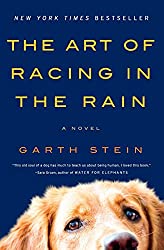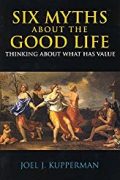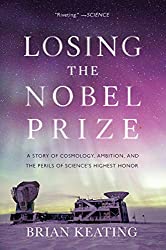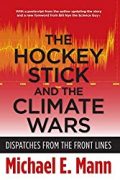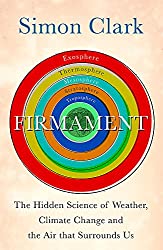
Rating: 7.7/10.
Firmament: The Hidden Science of Weather, Climate Change and the Air That Surrounds Us by Simon Clark
Book by a popular YouTuber who recently finished his PhD in atmospheric science, explaining his field to a general audience. Each of the nine chapters covers a different topic: the people who discovered it, and the physics of how it works. The basic instruments for measuring temperature and pressure were invented in the 16th century, allowing the first scientific observations about the atmosphere. Balloon experiments in the 19th century gave us an understanding of the earth’s atmospheric structure and how it is layered.
The atmosphere can be modelled physically using field equations describing how wind, temperature, and moisture changes over time. By making many measurements of temperature and pressure at different points, we can simulate the physics forward in time using the field equations, which is the basis of weather forecasting. However, chaos theory limits the ability to forecast into the distant future.
Some other phenomena covered in this book include explanations of long-distance climate patterns such as trade winds and how the Southern Oscillation (or El Nino) influences the monsoon season in India. The author’s own PhD research was on polar vortexes, specifically a phenomenon known as “sudden stratospheric warming” causing the polar vortex to break down, and studying how the troposphere and stratosphere behave during this phenomenon. The book ends with a discussion on the science of climate change.
Overall, the book covered a lot of interesting topics related to the atmosphere, the weather, and climate patterns. About half of the time was spent on history of how the science was discovered, the other half on the physics of how it works. To me it felt the author could have gone deeper, given his subject expertise: just as he finishes covering common knowledge and starts diving into the more interesting details, the chapter ends and switches to a different topic. Also there are relatively few diagrams, oftentimes what is described in a page of text could’ve been communicated more clearly with a diagram.
